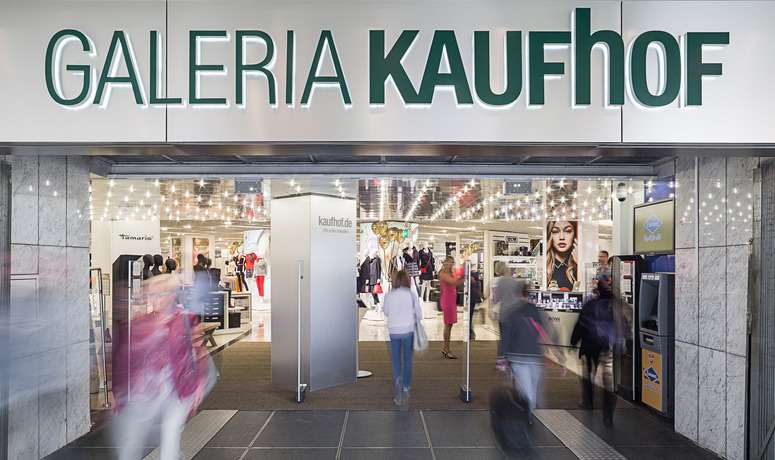“Alibaba taking over Klépierre or Amazon and Hammerson: Now, that would really be a game changer,” says Jacques Sinke, CEO of reteam international, explaining, in a relative manner, what has been going on in the European retail real estate industry of late. A consolidation process is taking place throughout the industry. The most notable of these was the acquisition of Westfield by Unibail-Rodamco, which was completed on June 7, 2018. The new industry giant has a portfolio valued at €63.7 billion (see POOLING EXPERIENCE AND EXPERTISE).
In August 2015, the then Unibail-Rodamco Germany, in turn, incorporated mfi management für immobilien into its portfolio. Klépierre was not inactive, either: At the end of 2008, the French group completed the acquisition of Scandinavian Steen & Strøm, followed by Corio in May 2015. Two years earlier, Blackstone Real Estate announced that it had acquired Multi Corporation.

In mid-2017, New Europe Property Investments (NEPI) finalized its merger with Rockcastle Global Real Estate. The transaction created one of the largest players in the real estate market in CEE, boasting a market value of approximately €6.1 billion. The new company is called NEPI Rockcastle. Furthermore, four years have passed since the Austrian holding company Signa took over the German department store chain Karstadt. Now, Karstadt and Galeria Kaufhof merge to form one company.
However, not everything is going smoothly: In April 2018, the aforementioned Klépierre announced that it would refrain from acquiring Hammerson. The acquisition was ultimately canceled for financial reasons. Péter Karai, Sales Director at Futureal Group, comments: “The deal failed due to improper pricing at that time, but a successful takeover within 12 to 18 months would not be surprising.”
For its part, Hammerson had made an all-share offer for intu Properties. Also occurring in April 2018, management decided that the offer was no longer valid due to the fact that it was no longer in the best interests of the shareholders.
High Investment Pressure
Not least, the failed deals underscore how much the market is moving. After all, money is cheap at the moment and investment pressure is correspondingly high. According to Árpád Török, CEO of TriGranit, the consolidation trend in the industry has been going on for a few years and will continue in the future.
He puts forward some weighty arguments for this development: “Such takeovers and mergers will put large companies in better negotiating positions and will enable them to offer tenants multi-locations with better overall terms. By owning multiple shopping centers, multi-corporations will be able to work with changing retail trends worldwide – a phenomenon that benefits both owners and retailers. Tenants will choose the best operating shopping centers, and, in the long run, the bigger ones will be even better.”
Török stresses that, in addition to all these factors, location, accessibility, the right tenant mix, the right balance of profiles, and the wide range of services – shopping, service, entertainment, and food – are a must and are the main aspects for tenants when choosing a shopping center. A clear layout and attractive architectural solutions can also create added value.
Andreas Hohlmann, Managing Director of Unibail-Rodamco-Westfield Germany, also has the same opinion: “Leading retailers and fashion brands are always looking for the most attractive destinations. The attractiveness of a location depends on several factors – most importantly on an appealing tenant mix, outstanding architecture and design, exceptional marketing measures, and a generally exceptionally high quality of stay. In return, destinations that offer these attributes generate the highest customer footfall and, therefore, attract even more attention from major brands. This is a logical cycle, and we, as operators of shopping centers, are its natural drivers.”

Better Negotiation Position with Retailers
This is something on which we can all agree. Large corporations are in a position to stand up to the bargaining power of retailers, who have consolidated their position over the last few years, or to bring them on board with strong arguments. One of these arguments is that only the industrial giants have the capability to continuously and professionally implement large projects – such as “Click & Collect” – at their locations. In view of the competition posed by online retailing, this represents a serious advantage.
Admittedly, takeovers also have their downsides. The integration period often lasts for what feels like an eternity and unsettles many participants, primarily the employees. It is necessary to clarify basic things, such as the company name. In the quest for compromise, this occasionally leads to a long string of words, which, in turn, generally results in problems in everyday business and, particularly, in the rebranding of various assets. No matter how powerful the new player may be in the market as a result of its size, the decision-making chain in the background is often slow and winding.
“With scale, there is always the risk of becoming less agile, so it is very important for all of us to promote a culture of innovation that puts customers first,” argues Henrik Madsen, Managing Director Northern Europe at McArthurGlen.
More of the Same …
Thomas Mark, President and Member of MK Illumination, also pinpoints downsides: “One of the consequences is the reduction in the variety of services. Small local gastronomy entrepreneurs, for example, simply cannot afford to maintain a presence in newer shopping centers. The risk is that the shopping center industry will become homogeneous and increasingly offer “more of the same”.
It is vital that industry giants strive to attract local businesses and service providers in order to ensure a diverse tenant mix. One can only hope that the antitrust law will regulate the development of the industry, because a lack of competition will not be good for anyone.”
Is there a danger that, in the near future, only a few mega-players will divide up the European market and that retail real estate will, therefore, become more and more uniform? This train of thought is not to be dismissed. Its materialization would clearly run counter to the innovative spirit to which the industry dedicated itself in the 2010s.
Asset Quality is Crucial

Joanna Fisher, Managing Director Center Management at ECE, does not anticipate this development. She considers consolidation tendencies in almost all industries to be normal from time to time. This applies to new business models or markets as well as to established industries and mature markets, such as the shopping center sector. “After a certain period of time, there are always attempts to grow more rapidly in size or create synergies, not through organic growth, but through mergers or acquisitions. We are still far from dominance by large corporations – which, in my opinion, do not exist in our industry – or even monopoly-like structures.”
According to Fisher, a glance at the large number of individual players in the market shows that. In Germany, for example, far more than half of the centers are still managed by small or medium-sized companies. In addition: In the shopping center sector in particular, size is not the decisive criterion, but rather the quality of the assets has become increasingly important.
Dietmar Reindl, on the other hand, expects further growth through takeovers, especially for listed real estate companies. “The high real estate prices make this the much more efficient and economical growth path. As in many other areas of industry and the service sector, there will, therefore, be greater consolidation and market dominance. This makes it all the more important for a company to position a strong profile and a clearly defined product on the market,” says the COO of the Immofinanz Group.
Concentrating on fewer suppliers will have a balancing effect on tenants and consumers. Thus, the framework conditions for leasing will converge more closely and consumers will find more comparable offers. This, in turn, will create niches for operators to differentiate themselves from the mass market through individual concepts. Strategically, according to Reindl, this clearly signifies either market dominance or niche.
Catchphrase: Location Dominance
Listed companies like Immofinanz cannot help themselves. They are, so to speak, doomed to grow. The current balance sheet must top that of the previous financial year. Stagnation or even negative figures immediately penalize the stakeholders.
However, the dominance mentioned by Reindl does not have to pertain to an entire market. Marcus Wild, CEO of SES Spar European Shopping Centers, speaks of a selection in this context: “The good, dominant centers and the weaker malls emerge in the process. The economies of scale brought about by the consolidation process are certainly an effect. However, if a center is dominated by a location, it has a good defensive position, even with very large competitors. It is, therefore, much more important that a center has the facilities and prerequisites to maintain dominance in a region.”
To return to the scenario mentioned at the beginning: Two years ago, Amazon acquired the Whole Foods grocery store chain and, since then, has owned more than 450 brick-and-mortar stores. In general, more and more online retailers are opening stores in shopping centers or on streets. A bang à la “Alibaba taking over Klépierre or Amazon and Hammerson” cannot be ruled out in the medium term. Until then, the traditional wave of takeovers will continue.
Sign up for our ACROSS Newsletter. Subscribe to ACROSS Magazine.






